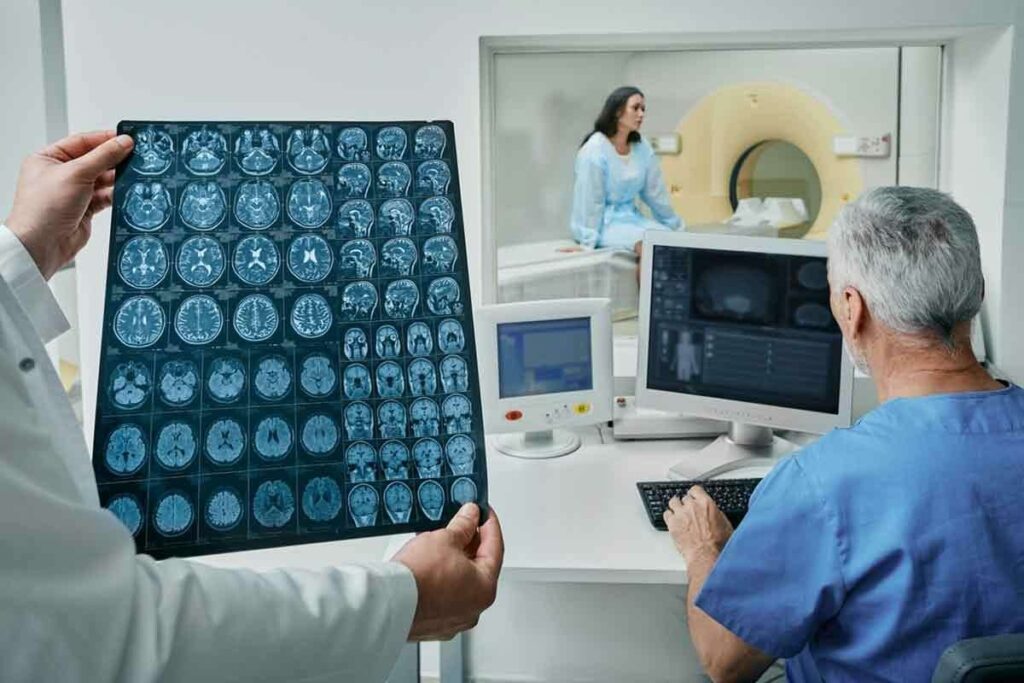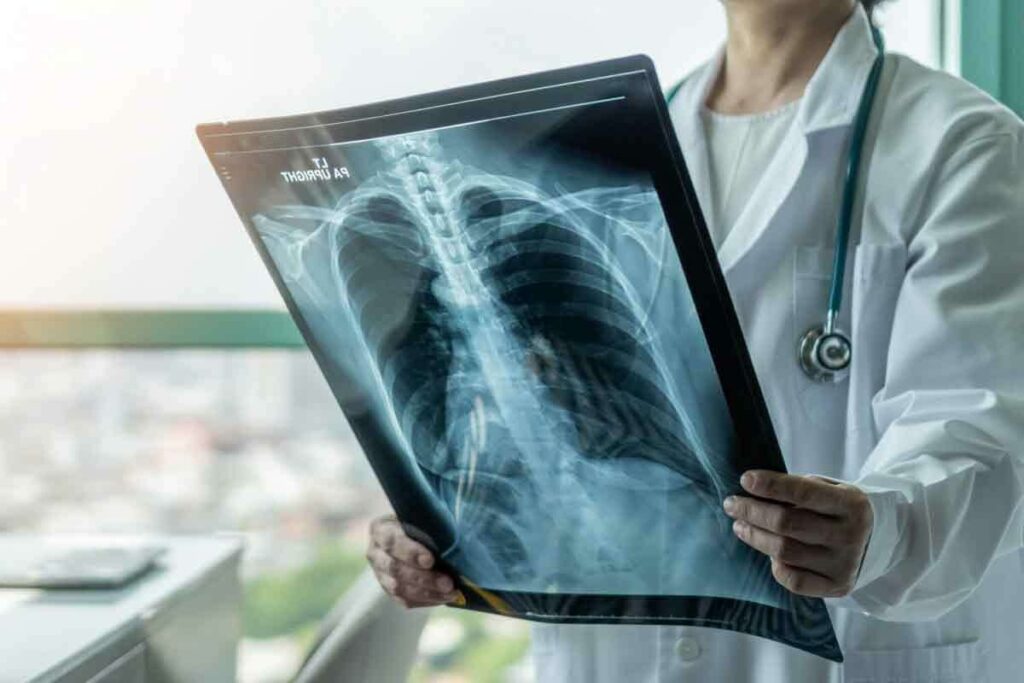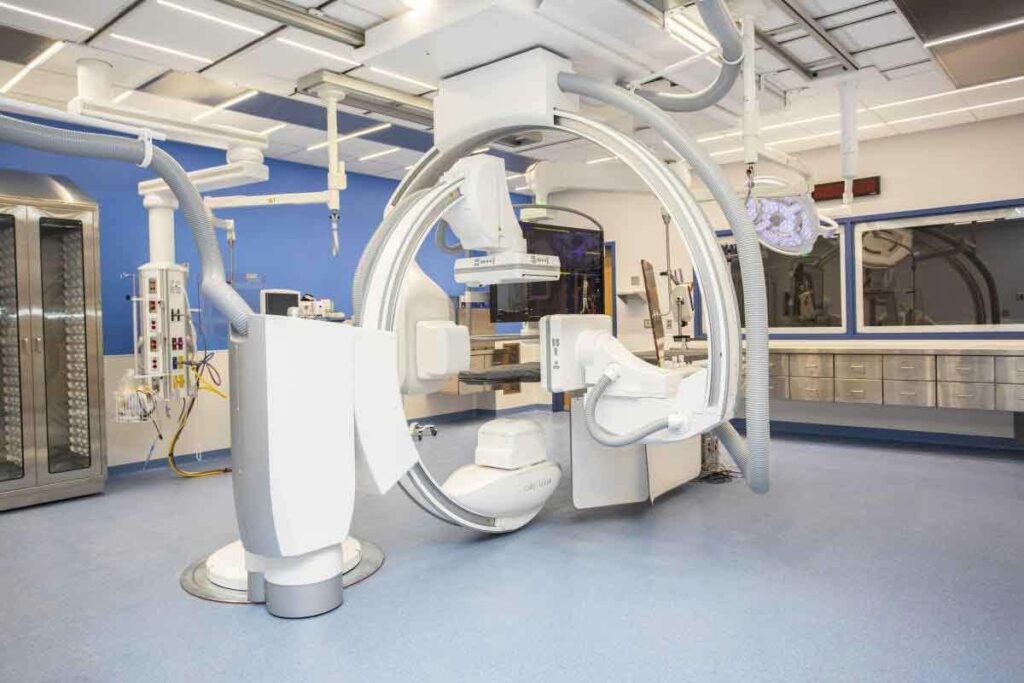Last Updated on October 21, 2025 by mcelik

We often wonder about the qualifications and expertise of medical professionals. A radiologist is a medical doctor who has an MD or DO degree. They also have specialized training in radiology.
Becoming a radiologist takes a lot of education and training. First, one must get a bachelor’s degree. Then, they attend medical school and do a radiology residency, which takes years. Radiology doctors are key in modern healthcare, using imaging to diagnose and treat diseases.

A radiologist is a medical doctor because of their deep education and training in radiology. They are experts at reading medical images. This helps doctors make treatment plans.
Radiologists go through a lot of training to become doctors. They have:
This shows they are very skilled and well-trained. It proves they are indeed medical doctors.
Radiologists are seen as real doctors by law and by their peers. They can practice medicine and follow the same rules as other doctors. They also join medical groups and follow ethical rules.
The American Board of Radiology certification shows their skill and dedication. It means they meet high standards and keep learning.
Key aspects of their professional standing include:
Radiologists keep high standards to give the best care. They also help make radiology better.

Becoming a radiology doctor takes years of education. It’s a journey that prepares you for a career in radiology. You’ll learn the skills and knowledge needed to excel.
To start, you need a bachelor’s degree in a science field like biology or chemistry. A strong science background is key for medical school and beyond. You’ll study anatomy, physiology, and math.
It’s also important to take liberal arts courses. They help you think critically and solve problems.
After your bachelor’s, you go to medical school for four years. Here, you learn about the human body and diseases. Clinical rotations in the last two years give you practical experience.
Medical school prepares you for residency. You’ll learn a lot about medicine.
After medical school, you enter a five-year radiology residency. It’s divided into rotations that teach you different imaging techniques. You’ll learn to read images and care for patients under experienced doctors.
The residency builds your skills gradually. You’ll learn about X-ray, CT, MRI, and more.
| Stage | Duration | Key Components |
| Bachelor’s Degree | 4 years | Science-related coursework, liberal arts |
| Medical School | 4 years | Classroom instruction, clinical rotations |
| Radiology Residency | Up to 5 years | Structured training, imaging modalities, and procedural skills |
By following this path, you can become a skilled radiology doctor. You’ll be ready to offer top-notch diagnostic and interventional services.
Becoming a certified radiologist is a tough process overseen by the American Board of Radiology (ABR). It makes sure radiologists have the right knowledge and skills. This is to ensure they can give top-notch care to patients.
The certification process might seem scary, but it’s a key step in a radiologist’s career. Getting ABR certification shows a radiologist has reached the top in their field.
The ABR makes radiologists take exams to check their knowledge. These exams cover many areas, like diagnostic radiology and radiation oncology. The ABR keeps updating these exams to include the newest tech and methods.
“The ABR certification process is designed to be challenging because we want to ensure that certified radiologists are truly experts in their field,” says the ABR. This shows how serious they are about quality in radiology.
To keep their certification, radiologists must do continuing education. This keeps them up-to-date with radiology’s latest. The ABR sets a number of credits to be done within a time frame. This can be through conferences, online courses, or other professional activities.
As the ABR says,
“Continuing education is essential for radiologists to stay abreast of new technologies and techniques, ensuring they provide the best possible care for their patients.”
We understand the value of ongoing learning in radiology. Our focus on continuing education shows our commitment to top-notch patient care.
By going through the ABR certification and keeping it up with continuing education, radiologists show they’re all in for excellence. They’re dedicated to giving the best care to their patients.
Radiologists and radiologic technologists are key in radiology, but they do different jobs. Radiologists are doctors who read medical images to find and treat diseases. Radiologic technologists, on the other hand, run imaging machines and do procedures.
Radiologists need more education. They get a bachelor’s degree, then four years of medical school for an MD or DO. They also do years of residency in radiology. Radiologists can read complex images and help with patient care.
Radiologic technologists need an associate’s degree or a certificate. They must also get licensed or certified. Their training is on using imaging equipment and setting up patients for scans.
Radiologists interpret images, talk to other doctors, and do procedures. They are key in diagnosing and treating diseases.
Radiologic technologists get patients ready for scans, use the machines, and make sure images are good. They are important for the imaging process, but don’t read images or give diagnoses.
It’s important to know the differences between radiologists and radiologic technologists. Both are crucial for good patient care. We count on their skills to help us.
Physician radiologists are key in making accurate diagnoses and caring for patients. They use their skills to read complex medical images. This helps doctors make treatment plans that improve patient health.
The main job of a radiologist,t MD, is to correctly read medical images. They look at X-rays, CT scans, MRIs, and ultrasound images. They find problems and diagnose diseases.
Radiologists have special training to spot normal and abnormal images. They work with other doctors to match what they see in images with what patients are feeling.
For example, when surgery is needed, radiologists help surgeons. They give them exact information about the body’s structures. This makes surgeries more precise and less invasive.
| Specialist | Role in Patient Care | Collaboration with a Radiologist |
| Surgeon | Performs surgical interventions | Uses radiologist’s imaging findings for pre-surgical planning |
| Oncologist | Manages cancer treatment | Relies on radiologists’ assessments for tumor staging and treatment monitoring |
| Primary Care Physician | Provides initial patient assessment and ongoing care | Uses radiologists’ reports to inform diagnosis and treatment plans |
In summary, radiologists are crucial in diagnostic medicine. They accurately read medical images and work with other doctors. This greatly helps in patient care and treatment success.
Advanced imaging is key in medical diagnosis, and radiology doctors lead in reading these images. We use various technologies to spot and treat diseases.
X-rays and CT scans are basic but crucial in radiology. X-rays quickly show bone breaks and some lung issues. CT scans give detailed views of the body, helping find many conditions, like injuries and cancers.
CT scans help us check complex injuries, plan biopsies, and see if treatments work. Their detailed images are very helpful in emergency care and cancer planning.
MRI is a strong tool for soft tissue images, great for brain, spine, and joint issues. Its ability to see different soft tissues makes it key in radiology.
We use MRI for many conditions, like brain disorders, muscle injuries, and cancers. Its detailed images help us plan treatments.
Ultrasound uses sound waves to see inside the body. It’s used for gallbladder, liver, kidney, and thyroid issues, and to check on babies during pregnancy.
Nuclear medicine uses tiny amounts of radioactive materials for diagnosis and treatment. PET scans, for example, are great for cancer, heart, and brain studies, showing how the body works.
Radiology is always getting better, with new tech to improve diagnosis and care. New tools like contrast-enhanced ultrasound and hybrid imaging are making radiology doctors even better at their jobs.
We’re always learning about new tech to give our patients the best care and diagnoses.
As radiologists grow in their careers, they often look to specialize. The field of radiology is wide and varied. It offers many subspecialties for radiologists to focus on.
They can get specialized training through fellowships. This lets them become experts in certain areas. Some key subspecialties include:
Neuroradiology deals with brain and nervous system disorders. Radiologists in this field use MRI and CT scans to spot issues like stroke and tumors.
Key aspects of neuroradiology include:
Interventional radiology uses imaging to guide procedures. These can be for diagnosis or treatment, offering surgery alternatives.
Examples of interventional radiology procedures include:
Pediatric radiology focuses on imaging children. Pediatric radiologists need to understand child development and anatomy.
Pediatric radiologists must consider:
Musculoskeletal radiology looks at muscles, bones, and joints. It’s key for diagnosing sports injuries and guiding orthopedic care.
Musculoskeletal radiologists interpret a range of imaging modalities, including:
By choosing these subspecialties, radiologists can improve their skills. They can also work better with other doctors and help patients more. Each subspecialty brings its own challenges and rewards.
After finishing residency, fellowship programs let radiologists explore their specialty more deeply. These programs help them grow their skills and improve their career chances.
Radiology fellowships come in different types and lengths, fitting various subspecialties. For example, a cross-sectional imaging fellowship program focuses on advanced imaging techniques. These usually last one to two years and offer deep training in areas like neuroradiology or musculoskeletal radiology.
Getting fellowship training boosts a radiologist’s career by adding specialized knowledge and skills. This training makes them more competitive and opens doors to leadership and academic roles. As a physician radiologist, having this training sets them apart in a tough job market.
Also, fellowship-trained radiologists are often in high demand for their expertise. This leads to better job opportunities and possibly higher pay. The specialized training also lets them help advance radiology practices and research, enriching their career.
Radiologists work in many places, like hospitals and private clinics. This lets them help many patients with their diagnostic needs.
In hospitals, radiologists are key. They read X-rays, CT scans, and MRIs. These readings help find many health issues, from simple breaks to serious diseases like cancer.
They work with doctors and surgeons in the emergency room. This teamwork is crucial for quick and accurate diagnoses. It helps patients get the right care fast.
Some radiologists also work in private clinics or do teleradiology. Teleradiology lets them read images from anywhere. This makes it easier to get diagnostic help.
Working in private clinics can be better for their work-life balance. Teleradiology lets them work from home. This helps clinics without in-house radiologists get the help they need.
Radiologist doctors are important team players. They talk with other doctors to share imaging results. They suggest more tests or treatments if needed.
Good communication is key. They often talk with other healthcare teams. This ensures patients get the best care possible.
| Setting | Key Responsibilities | Benefits |
| Hospital-Based | Interpreting medical images, collaborating with healthcare teams | Immediate access to patient data, direct communication with care teams |
| Private Practice | Providing diagnostic services, potentially a more controlled work environment | Improved work-life balance, potential for more personalized patient care |
| Teleradiology | Remote interpretation of images, flexible work arrangements | Expanded access to diagnostic services, flexibility in work location, and hours |
Today’s radiologists need both medical knowledge and tech skills. They must use and understand new imaging tech to make accurate diagnoses and treatments.
The tech in radiology is changing fast. New tools like digital imaging and AI are changing how radiologists work. To keep up, radiologist MDs need to know the latest tech and how to use it in their work.
Digital imaging has changed radiology a lot. It lets radiologists work with images better. Picture Archiving and Communication Systems (PACS) are key in radiology today. They help keep and get digital images safely.
Radiologists need to know how to use these systems well. This helps them make better diagnoses and improve patient care.
AI and ML are being used more in radiology. They help with image reading and make some tasks easier. These tools can make radiology more accurate and efficient.
Key uses of AI and ML in radiology include:
For radiologist MDs, keeping up with these tech changes is key. It helps them give the best care and stay ahead in their field.
In radiology, ethics and safety are key. Radiologists face tough choices while keeping patients and staff safe.
Radiologists must protect patient privacy and data. They follow strict rules, like HIPAA in the U.S., to keep patient info safe. They use strong security to stop data leaks and unauthorized access.
Keeping patient info private is crucial.
“The confidentiality of patient information is a fundamental principle in healthcare.”
This rule helps us keep patient trust and follow ethical standards.
Radiation safety is also vital in radiology. Radiologists aim to use the least amount of radiation needed for good images. The International Atomic Energy Agency says to use as little radiation as possible.
| Measure | Description | Benefit |
| Regular Equipment Maintenance | Ensures that imaging equipment is functioning correctly and safely. | Reduces the risk of radiation exposure due to equipment malfunction. |
| Staff Training | Educates staff on proper use of imaging equipment and radiation safety protocols. | Minimizes radiation exposure to patients and staff. |
| Patient Education | Informs patients about the risks and benefits of radiation exposure. | Enhances patient understanding and cooperation. |
In summary, radiologists are key to ethics and safety in radiology. They focus on privacy, data security, and radiation safety. This way, they offer top-notch care while reducing risks.
Radiologist physicians are key in today’s healthcare. They give vital information that helps doctors decide on treatments. As imaging tech gets better, radiologists’ skills are more important than ever for accurate diagnoses and care.
Radiologists have special training to read complex images like X-rays and MRI scans. Their knowledge helps teams make better treatment plans. This leads to better patient care and saves lives.
Recent studies show radiologists are vital in patient care. They use their skills to find and treat diseases. As radiology grows, doctors are using new tech like AI to improve care.
In short, radiologists are very important. They help lead in medical innovation, combining their knowledge with new tech. This makes them crucial for top-notch patient care in the future.
A radiologist is a medical doctor (MD) or doctor of osteopathic medicine (DO). They have a bachelor’s degree and four years of medical school. They also complete a radiology residency, which can last up to five years.
Yes, a radiologist is a medical doctor. They specialize in radiology and can interpret medical images to provide diagnoses.
Radiologists are medical doctors who interpret medical images. Radiologic technologists operate imaging equipment and perform procedures.
Radiologists are key in patient care. They interpret medical images and provide diagnoses. This guides treatment decisions. They work with other specialists for comprehensive care.
Radiologists interpret many imaging modalities. This includes X-rays, CT scans, MRI, ultrasound, and nuclear medicine studies.
Yes, radiologists can specialize. They can focus on neuroradiology, interventional radiology, pediatric radiology, and musculoskeletal radiology. These areas require extra training and expertise.
Board certification by the American Board of Radiology (ABR) shows a radiologist’s expertise. It proves their ability to interpret images and provide accurate diagnoses.
Radiologists must complete continuing education. This keeps them updated with the latest technologies and techniques in radiology.
Fellowship training gives advanced training in a specific area of radiology. It boosts a radiologist’s expertise and career prospects.
Radiologists have big responsibilities for patient safety. They ensure patient privacy and data security. They also work to minimize radiation exposure to patients and staff.
Modern radiologists need to be skilled in digital imaging systems like PACS. They also need to know about emerging technologies like AI and machine learning. These technologies help improve image interpretation and patient care.
Subscribe to our e-newsletter to stay informed about the latest innovations in the world of health and exclusive offers!
WhatsApp us